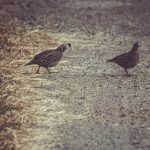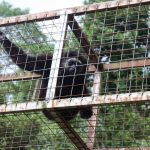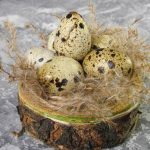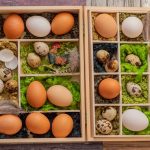Snowflake quail, also known as Coturnix coturnix, are a popular breed of quail that are known for their unique snowflake-like pattern on their feathers. Breeding snowflake quail can be a rewarding and enjoyable experience for both experienced breeders and beginners. These small birds are relatively easy to care for and can be bred in a relatively small space, making them an ideal choice for hobbyists and small-scale breeders.
Breeding snowflake quail requires careful attention to detail and a good understanding of their specific needs. From selecting the right breeding stock to creating the proper breeding environment, understanding the breeding process, and caring for the chicks, there are several important factors to consider. Additionally, ensuring the health and nutrition of the breeding quail is crucial for successful breeding. In this comprehensive guide, we will explore the various aspects of snowflake quail breeding, providing valuable insights and tips for breeders at every level.
Table of Contents
Key Takeaways
- Snowflake quail breeding requires careful selection of breeding stock to ensure healthy and productive offspring.
- Creating the proper breeding environment is essential for successful snowflake quail breeding, including providing adequate space and nesting areas.
- Understanding the breeding process of snowflake quail, including mating behaviors and egg incubation, is crucial for successful breeding.
- Caring for snowflake quail chicks involves providing proper nutrition, warmth, and protection from predators.
- Health and nutrition are key factors in successful breeding, including providing a balanced diet and monitoring for common health issues.
Selecting Breeding Stock
Selecting the right breeding stock is crucial for successful snowflake quail breeding. When choosing breeding stock, it is important to select healthy, disease-free birds with desirable traits such as good size, strong legs, and vibrant plumage. Look for birds that are active, alert, and have a good appetite. Avoid birds that show signs of illness or deformities, as these traits can be passed on to the offspring.
It is also important to consider the genetic diversity of the breeding stock. Inbreeding can lead to genetic abnormalities and reduced fertility, so it is advisable to introduce new bloodlines into your breeding program periodically. When selecting breeding stock, aim for a balanced ratio of males to females to ensure successful mating and fertility. By carefully choosing your breeding stock, you can lay a solid foundation for a healthy and productive breeding program.
Creating the Proper Breeding Environment
Creating the proper breeding environment is essential for the health and well-being of your snowflake quail and the success of your breeding program. The breeding environment should provide adequate space, ventilation, and protection from predators. A well-ventilated and clean coop or aviary is essential to prevent the buildup of ammonia and reduce the risk of respiratory issues in the birds.
Nesting boxes or areas should be provided to give the quail a safe and comfortable place to lay their eggs. The nesting boxes should be filled with clean, dry bedding such as straw or wood shavings to provide a suitable environment for egg laying. Additionally, providing a balanced diet and access to clean water is crucial for the overall health and fertility of the breeding quail. By creating a suitable breeding environment, you can help ensure the well-being of your birds and optimize the conditions for successful breeding.
Understanding the Breeding Process
Understanding the breeding process is essential for successful snowflake quail breeding. Snowflake quail reach sexual maturity at around 6-8 weeks of age, at which point they will begin to lay eggs. The male quail will court the females by performing a mating dance and making vocalizations to attract a mate. Once a pair has formed, mating will occur, and the female will begin laying eggs.
Quail eggs typically take around 17-18 days to hatch, and the chicks will need to be kept warm and protected during this time. It is important to collect the eggs daily to prevent them from being damaged or eaten by the adult quail. Once the eggs hatch, the chicks will need to be carefully monitored and provided with a suitable brooding area to ensure their survival.
By understanding the natural breeding behaviors of snowflake quail and providing the right conditions for mating, egg laying, and hatching, breeders can increase their chances of successful breeding and raise healthy offspring.
Caring for Snowflake Quail Chicks
Caring for snowflake quail chicks requires careful attention and dedication. Once the chicks have hatched, they will need to be kept warm and protected in a brooding area. A heat source such as a heat lamp or brooder should be provided to maintain a temperature of around 95-100 degrees Fahrenheit for the first week, gradually decreasing by 5 degrees each week until they are fully feathered.
Chicks should be provided with a suitable chick starter feed that is high in protein to support their growth and development. Clean water should be made available at all times, and it is important to monitor the chicks closely for any signs of illness or distress. Providing a clean and safe environment is crucial for the health and well-being of the chicks, so regular cleaning and sanitation of the brooding area is essential.
As the chicks grow, they can be transitioned to a larger enclosure with access to fresh air and natural light. By providing proper care and nutrition, breeders can ensure that their snowflake quail chicks grow into healthy adults ready for breeding.
Health and Nutrition for Breeding Quail

Maintaining the health and nutrition of breeding quail is essential for successful breeding and the production of healthy offspring. A balanced diet that is high in protein is crucial for breeding quail, as protein is essential for egg production and chick development. Commercially available quail feed or game bird feed can provide the necessary nutrients for breeding quail, but it is important to supplement their diet with fresh greens, fruits, and vegetables to ensure a well-rounded nutritional intake.
Regular access to clean water is also essential for breeding quail, as dehydration can lead to reduced egg production and fertility. Additionally, providing access to grit or crushed oyster shells can help support eggshell formation and overall digestive health in breeding quail.
Regular health checks should be conducted to monitor the overall well-being of the breeding quail. Look out for signs of illness such as lethargy, loss of appetite, abnormal droppings, or respiratory issues, and seek veterinary care if necessary. By maintaining a high standard of health and nutrition for breeding quail, breeders can optimize their breeding program and produce healthy offspring.
Troubleshooting Common Breeding Issues
Despite careful planning and attention to detail, breeders may encounter common issues during the snowflake quail breeding process. One common issue is low fertility or poor hatch rates, which can be caused by factors such as inadequate nutrition, stress, or age-related decline in fertility. By ensuring that the breeding quail are provided with a balanced diet, suitable living conditions, and regular health checks, breeders can help address these issues and improve fertility rates.
Another common issue is egg binding in female quail, which occurs when an egg becomes stuck in the reproductive tract. This can be a life-threatening condition if not addressed promptly. Providing calcium supplements and ensuring that the female quail have access to a suitable nesting area with clean bedding can help reduce the risk of egg binding.
Additionally, aggression between breeding pairs or overcrowding in the breeding environment can lead to stress and reduced fertility. Providing adequate space and separation between aggressive pairs can help alleviate these issues.
By troubleshooting common breeding issues and making adjustments to improve the overall well-being of the breeding quail, breeders can overcome challenges and optimize their breeding program for success.
In conclusion, snowflake quail breeding can be a rewarding endeavor for breeders at every level. By carefully selecting breeding stock, creating a suitable breeding environment, understanding the breeding process, caring for chicks, maintaining health and nutrition, and troubleshooting common issues, breeders can increase their chances of successful breeding and raise healthy offspring. With dedication, patience, and attention to detail, breeders can enjoy the unique experience of snowflake quail breeding while contributing to the conservation of this fascinating species.
If you’re interested in breeding snowflake quail, you may also want to learn about how to insulate a chicken coop to ensure the best environment for your birds. Check out this helpful article on how to insulate a chicken coop for tips on keeping your quail and other poultry comfortable and healthy.
FAQs
What are snowflake quail?
Snowflake quail, also known as Coturnix coturnix, are a species of small, ground-dwelling bird that are commonly kept for their eggs and meat. They are popular among breeders and hobbyists due to their relatively low maintenance and high productivity.
How do you breed snowflake quail?
Breeding snowflake quail involves providing a suitable environment with proper temperature, lighting, and nutrition. Breeding pairs should be kept in separate cages to prevent aggression and ensure successful mating. The female will lay eggs in a secluded nest, and the eggs will hatch after approximately 17 days of incubation.
What do snowflake quail eat?
Snowflake quail are omnivorous and can be fed a diet of commercial quail feed, supplemented with fresh fruits, vegetables, and protein sources such as mealworms or small insects. It is important to provide a balanced diet to ensure the health and productivity of the birds.
What is the lifespan of snowflake quail?
In captivity, snowflake quail can live for 2 to 5 years with proper care and nutrition. However, their lifespan in the wild may be shorter due to predation and environmental factors.
Are snowflake quail good for beginners to breed?
Snowflake quail are relatively easy to breed and care for, making them suitable for beginners. They require minimal space and can be kept in small enclosures, making them a practical choice for hobbyists and small-scale breeders. However, proper research and preparation are still necessary to ensure the well-being of the birds.
Meet Walter, the feathered-friend fanatic of Florida! Nestled in the sunshine state, Walter struts through life with his feathered companions, clucking his way to happiness. With a coop that’s fancier than a five-star hotel, he’s the Don Juan of the chicken world. When he’s not teaching his hens to do the cha-cha, you’ll find him in a heated debate with his prized rooster, Sir Clucks-a-Lot. Walter’s poultry passion is no yolk; he’s the sunny-side-up guy you never knew you needed in your flock of friends!







